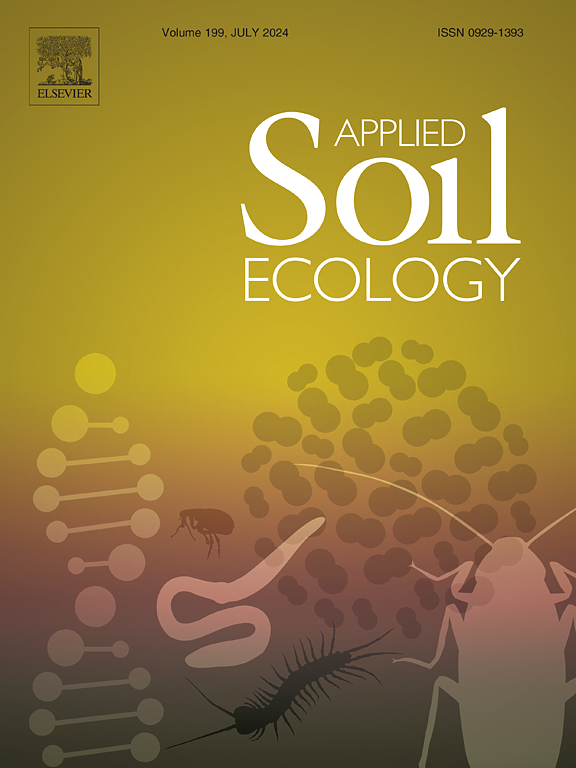Spatial variation in abundance of earthworms, soil properties and herbage yield were surveyed on a 1.4 ha grass–clover field. Sampling and measurements were made in a regular grid (25 m×25 m) of 32 sampling sites during the first and second years after the establishment of the ley. Five earthworm species were present in the field. The total abundance and biomass of earthworms varied from zero to 218 individuals and 18 g dry-weight per m2. The soil properties and herbage mass also varied widely. The majority of variables showed discernible spatial dependence in the first separation distance between the sampling sites. It was usually difficult to model the spatial continuity satisfactorily, because much of the small scale variation was evidently not captured by the sample spacing. Soil clay percentage displayed a particularly clear and continuous spatial gradient. The distributions of Lumbricus terrestris and Dendrodrilus rubidus were distinctly aggregated. For L. terrestris there was some evidence for association with silty soil, while D. rubidus was found only in the area with the lowest clay content. An alternative explanation for the uneven distribution of the two species is the recently started dispersal into the ley. Non-parametric correlation suggested a positive relationships between earthworm activity and both infiltration of water and clover production. When geographical distance between sampling sites was controlled for in the analyses, these correlations were not statistically discernible, but a positive relationship between total numbers of earthworms and soluble soil phosphorus content emerged.


